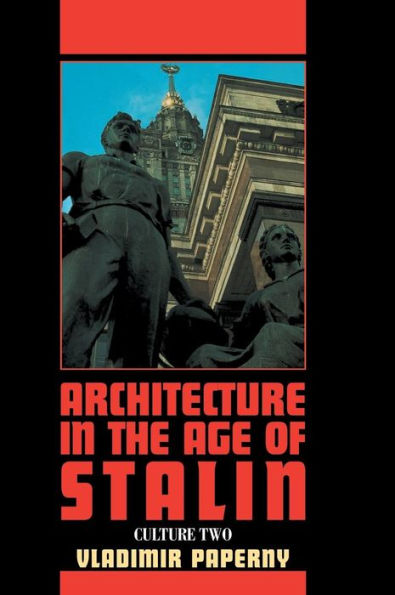Architecture in the Age of Stalin: Culture Two
Paperny examines the evolution of architecture in Russia during the Stalinist period. Defining two conflicting trends--Culture One and Culture Two--that have alternately prevailed in Russian culture, the author argues that the shift away from the architectural avant-garde of the 1920s was not entirely the result of Stalin's will. Rather, he demonstrates how the aesthetic choices of Stalin and his architects were conditioned by the prevailing cultural mechanisms of the 1930s and 40s. Combining academic precision with engaging narrative, Paperny leads the reader through the remarkable trajectory of architectural and cultural transformation that marked a pivotal moment of Russia's history.
1100944669
Architecture in the Age of Stalin: Culture Two
Paperny examines the evolution of architecture in Russia during the Stalinist period. Defining two conflicting trends--Culture One and Culture Two--that have alternately prevailed in Russian culture, the author argues that the shift away from the architectural avant-garde of the 1920s was not entirely the result of Stalin's will. Rather, he demonstrates how the aesthetic choices of Stalin and his architects were conditioned by the prevailing cultural mechanisms of the 1930s and 40s. Combining academic precision with engaging narrative, Paperny leads the reader through the remarkable trajectory of architectural and cultural transformation that marked a pivotal moment of Russia's history.
145.0
In Stock
5
1

Architecture in the Age of Stalin: Culture Two
400
Architecture in the Age of Stalin: Culture Two
400Hardcover(ENGLISH ED)
$145.00
145.0
In Stock

Product Details
| ISBN-13: | 9780521451192 |
|---|---|
| Publisher: | Cambridge University Press |
| Publication date: | 06/24/2002 |
| Series: | Cambridge Studies in New Art History and Criticism |
| Edition description: | ENGLISH ED |
| Pages: | 400 |
| Product dimensions: | 7.01(w) x 10.00(h) x 0.87(d) |
From the B&N Reads Blog
